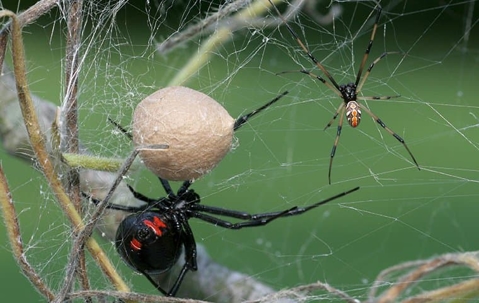The ABCs Of Spider Prevention: How To Keep Your Nashville Home Arachnid-Free
Local spider control begins with you. While spiders are beneficial in the natural world, they’re not useful, let alone desirable, in the home. Even worse, there’s a considerable intimidation factor when it comes to responding to a spider's presence in the house. Arachnophobia can paralyze certain people with fear when they spot one of these critters.
Overall, spider prevention and control is a big topic, but this post is just about the fundamentals – the ABCs of spider prevention.
We want to share with you how a few simple steps can help keep your house spider-free, which also translates to a reduced risk of potentially dangerous spider bites. The best spider control in Nashville begins with professional pest control from Urbanex. Thanks for joining us.
The Anatomy of A Spider: Understanding Their Physical Characteristics
Understanding the basic anatomy of spiders is helpful for understanding their behaviors and habits. We also feel that breaking down spider anatomy is a good way to mitigate the intimidation factor surrounding spiders.
Spiders have eight legs, two main body sections, and mouthparts called palps and chelicerae. Palps tend to look like shorter legs; in some cases, they can be used as legs.
How many eyes do spiders have? This is another feature that varies from species to species, but as a rule of thumb, spiders have eight eyes. Despite this, many spiders also have relatively poor vision.
With so many legs, many species of spiders are able to move quickly, though they often prefer to stay put and wait for their prey. Though spider anatomy may make them look creepy to humans, the old saying is true: spiders are more afraid of you than you are of them.
Spider Bite Symptoms: Warning Signs To Watch For
Spider bites can be dangerous, and we will cover the common symptoms of these bites shortly, but why do spiders bite in the first place? No matter the species, spiders bite to defend themselves and only bite as a last resort. Because they can move so quickly, spiders typically prefer to run away rather than confront the threat.
Moving on to the symptoms of spider bites, the most common symptoms include swelling, localized pain, and blistering. But symptoms can also be more serious, depending on the spider species and the bite victim. The more severe symptoms include chills, fever, aches, and feelings of nausea.
If you know that a spider has bitten you, pay close attention to your symptoms and health in the hours afterward. If you experience severe symptoms or are concerned about severe symptoms arising in the following days, consult a doctor or other healthcare professional.
An even safer approach is to engage in prevention strategies that will limit your exposure to spiders in the future.
Preventing Spiders From Coming Inside: Effective Prevention Techniques
There are some key strategies you should try to put into practice to prevent spiders in your home, such as:
- Reduce clutter in key areas of your home, like the attic, basement, and garage.
- Repair damaged window screens.
- Use door sweeps and replace weather stripping on windows.
- Manage other pest problems in the home, such as ants, mosquitoes, and flies.
- Safely remove spider webs as soon as you see them.
These simple strategies can go a long way toward reducing spider activity in your home. Meanwhile, if you have spiders that refuse to leave, it’s time to call in some extra help.
Experience Peace Of Mind: Choose Professional Spider Control
When it comes to how to get rid of spiders in your home, we recommend professional spider control.
Professionals can assess the problem and use their expertise to find the best possible solution to quickly and efficiently resolve your spider issue.
For spider removal for your home, contact Urbanex right away. We’ll be happy to help out.
Request Your Free Inspection
Complete the form below to schedule your no obligation inspection.

